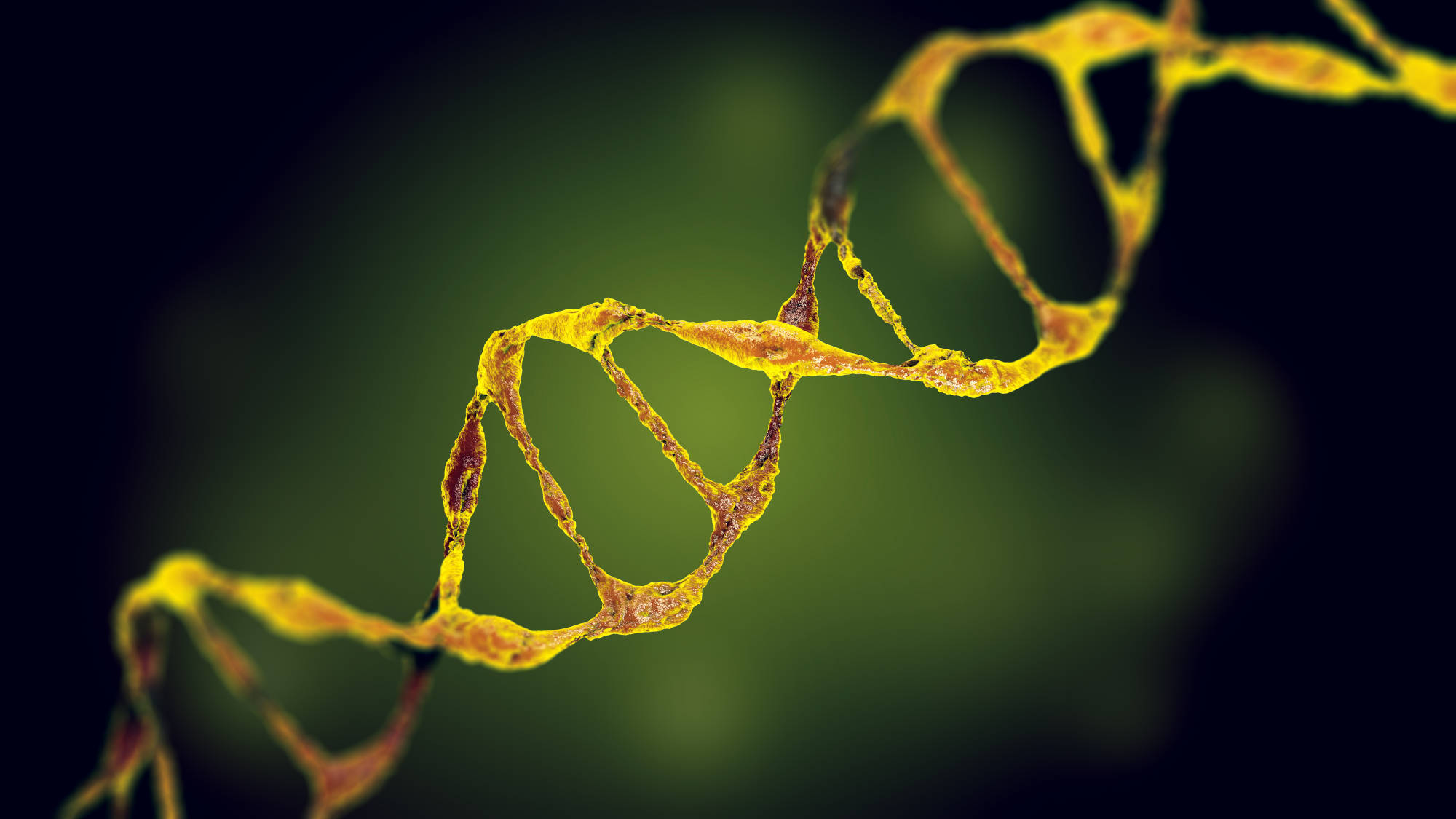Back pain is one of the most common chronic conditions experienced by all age groups and is the direct result of degenerative disc disease. Degenerative disc disease occurs naturally as people age due to wear-and-tear on the spinal disc. Disc degeneration could be caused by injuries from daily movements or loss of water in discs, leading to suboptimal cushioning and shock absorbance. Patients suffer from back or neck pain, muscle weakness, numbness, and in very severe cases, paralysis. Currently, the most readily available treatments include surgical treatment and physical therapy.1 Gene therapy is gaining attention as a new treatment option for disc degeneration by transferring therapeutic RNA or DNA to target cells. The therapeutic gene would produce desired gene products continuously to ensure efficacy in the long run, making gene therapy an attractive option for treating chronic diseases.2
Gene therapy requires the use of vectors to transfer modified cells into target cells. Vectors can be viral or non-viral. To treat disc degeneration, viral vectors can be more advantageous because during the viral lifecycle, gene expression is incorporated long-term.2 Studies on virus-mediated gene therapy are largely in vitro, in which cells are harvested from the host’s disc, the desired gene is inserted into the cells, and the genetically modified cells are re-inserted into the host.3 The first reported case of in vitro gene therapy was mediated by retroviruses. Chondrocytic cells from intervertebral endplates were harvested, and retrovirus-mediated vectors were transferred. The vector introduced β-galactosidase (lacZ gene) and the cDNA of human interleukin-1 receptor antagonist into the chondrocytic end plate cells.4 This early study of virus-mediated gene therapy demonstrated the efficacy of in vitro gene transfer to treat disc degeneration.
Adenovirus-mediated transfer of the lacZ gene to intervertebral disc cells has also proven to be successful, especially for long-term expression. Unlike retrovirus vectors, adenovirus vectors can be introduced both in vivo and in vitro. During in vitro gene therapy experiments, cells were obtained from the nucleus pulposus tissue of white rabbits. Adenovirus vectors transfected the lacZ gene into the modified cells. Nishida and Kang et al. demonstrated that the in vitro therapy was efficient with a high success rate. During in vivo gene therapy, lacZ gene with saline solution was injected into the nucleus pulposus tissue through direct gene transfer. Interestingly, the in vivo experiment showed considerably longer gene expression that lasted more than one year.5 Researchers credit this longer transgene expression of in vivo gene therapy to the structure of avascular disc tissue. Avascular disc tissue is not an ideal environment for implanted cells, so the survival rate of in vitro cells can be low in many cases. Usually, disc degeneration is localized on a particular encapsulated disc; therefore, by targeting a specific disc, in vivo therapy resulted in longer efficacy and expression.6
Recently, there has been concern over the safety of virus-mediated gene therapy due to the possibility that inserted viral vectors could result in insertional mutagenesis. Virus-mediated therapy also requires complex patient care at high costs after the procedure.7 Non-virus-mediated gene therapy methods have been more widely explored, including the use of polyplex micelles. MiR29a is part of a family of RNA known to suppress tissue fibrosis. It is mixed with polyethylene glycol precursors and MMP-cleavable peptide cross-linkers to form a micelle, which is degraded when released in pathological disc tissues. This allows for highly specific, localized release and has shown potential to delay and even reverse disc degeneration.8
Disc degeneration is a common condition that is difficult to prevent and treat. The structure and environment of the human disc pose many challenges for researchers who want to consider gene therapy as a novel option. Viral, nonviral, in vitro, and in vivo gene therapy each has advantages and limitations. Since most gene therapy experiments for disc degeneration have only been conducted on animal models, more studies must be conducted for gene therapy to become a viable and safe option for patients.
References
- Taher, F., Essig, D., Lebl, D. R., Hughes, A. P., Sama, A. A., Cammisa, F. P., & Girardi, F. P. (2012). Lumbar degenerative disc disease: current and future concepts of diagnosis and management. Advances in orthopedics, 2012, 970752. https://doi.org/10.1155/2012/970752
- Takeoka, Y., Yurube, T., & Nishida, K. (2020). Gene Therapy Approach for Intervertebral Disc Degeneration: An Update. Neurospine, 17(1), 3–14. https://doi.org/10.14245/ns.2040042.021
- Wehling P, Schulitz KP, Robbins PD, et al. Transfer of genes to chondrocytic cells of the lumbar spine. Proposal for a treatment strategy of spinal disorders by local gene therapy. Spine (Phila Pa 1976) 1997; 22:1092–7.
- Wehling P, Schulitz KP, Robbins PD, Evans CH, Reinecke JA. Transfer of genes to chondrocytic cells of the lumbar spine. Proposal for a treatment strategy of spinal disorders by local gene therapy. Spine. 1997;22:1092–1097. doi: 10.1097/00007632-199705150-00008.
- Nishida K, Gilbertson LG, Moon SH, Robbins PD, Evans CH, Kang JD (2000) Immune-privilege of the intervertebral disc: long-term transgene expression following direct adenovirus-mediated gene transfer. International Society for the Study of the Lumbar Spine, Adelaide
- Nishida, K., Suzuki, T., Kakutani, K., Yurube, T., Maeno, K., Kurosaka, M., & Doita, M. (2008). Gene therapy approach for disc degeneration and associated spinal disorders. European spine journal: official publication of the European Spine Society, the European Spinal Deformity Society, and the European Section of the Cervical Spine Research Society, 17 Suppl 4(Suppl 4), 459–466. https://doi.org/10.1007/s00586-008-0751-5
- Tripathy SK, Black HB, Goldwasser E, et al. Immune responses to transgene-encoded proteins limit the stability of gene expression after injection of replication-defective adenovirus vectors. Nat Med. 1996; 2:545–50.
- Feng G, Zha Z, Huang Y, et al. Sustained and bioresponsive two-stage delivery of therapeutic miRNA via polyplex micelle-loaded injectable hydrogels for inhibition of intervertebral disc fibrosis. Adv Healthc Mater. 2018;7:e1800623.
